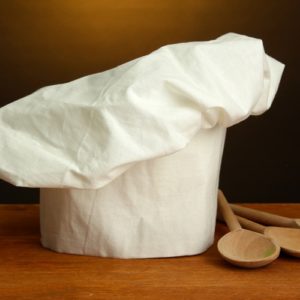When people hear the word “chef,” a specific image comes to mind. Most tend to picture chefs as serious-looking people holding a knife or a wooden spoon, wearing an all-white coat. All other variables aside, the image of a chef almost always includes one thing: a tall white hat. There’s a reason we have this image, as the chef’s hat has a long history. While utilitarian in nature, the hat a chef wears can work as a statement of status, fashion or tradition. Graduates of Texas culinary arts programs may one day find themselves wearing a chef’s uniform. Here’s what that headpiece means:
Chef’s hat origins
There are a number of different possible sources of the chef’s hat we know today. One origin story says that King Henry VIII beheaded a chef after finding a hair in his meal. The next chef was ordered to wear a hat while cooking, and thus began the use of hats to maintain hygiene. However, some stories say that as early as the seventh century A.D., hats were worn by chefs to signify status. Specifically, they were given hats to make up for any mistreatment they were feeling, as this was a time in which chefs seemed to be regularly poisoning kings who scorned them. While either of these stories are equally likely (and unlikely) to be the real source of the chef’s hat, they represent the accessory as it’s used today: both as a tool and a symbol.
Symbolism of the chef’s hat
The quintessential chef’s hat is called a toque blanche. “Toque” refers to any brimless hat, and “blanche” is French for white. The choice to wear a white hat usually comes down to matching the white coat that many cooks wear. White is considered the best color for chefs, as it symbolizes the cleanliness of the kitchen.
The hat itself can be used to symbolize the prowess of the chef. Traditionally, the chef’s hat was meant to have 100 pleats, symbolizing 100 different ways to cook an egg. Today, there might not actually be 100 pleats in a chef’s hat, but the symbolism still stands. Other aspects of the hat can be symbolic: For example, in some kitchens, the chefs with the highest rank have the tallest hats. Different hat styles may also be used to distinguish roles in the kitchen.
Read more about Chefs:


